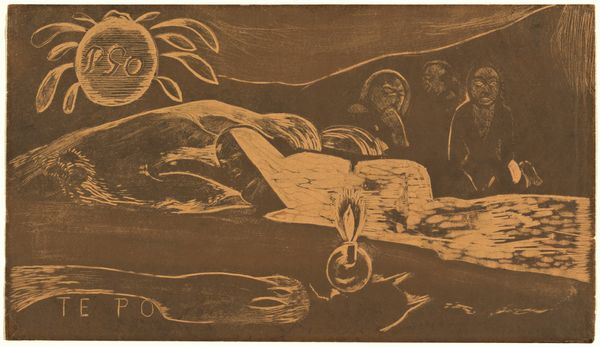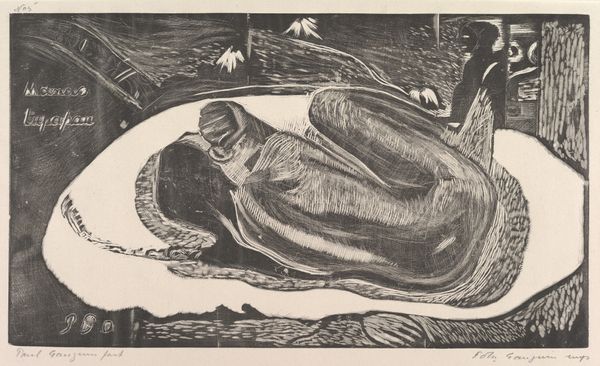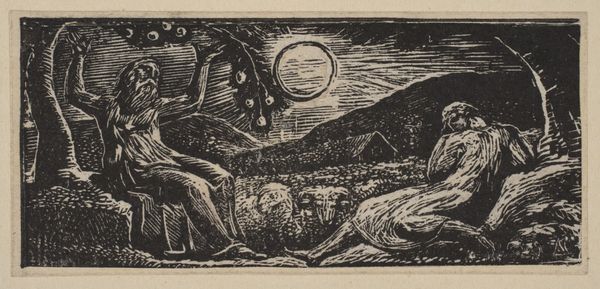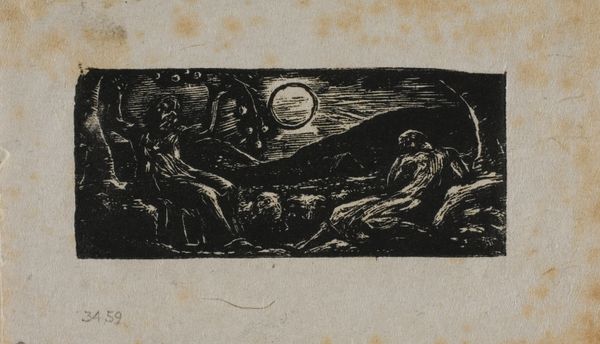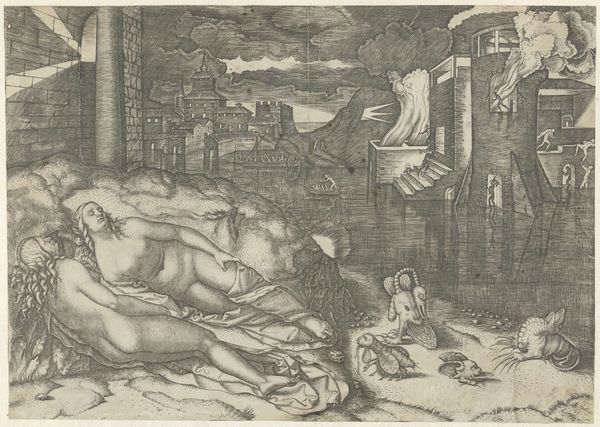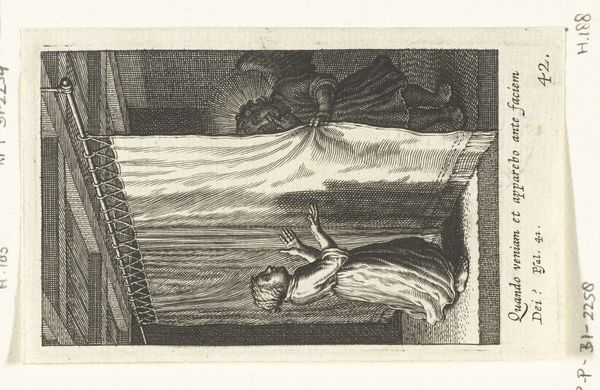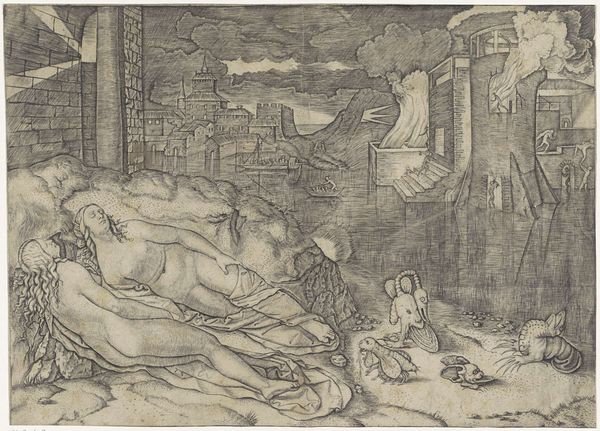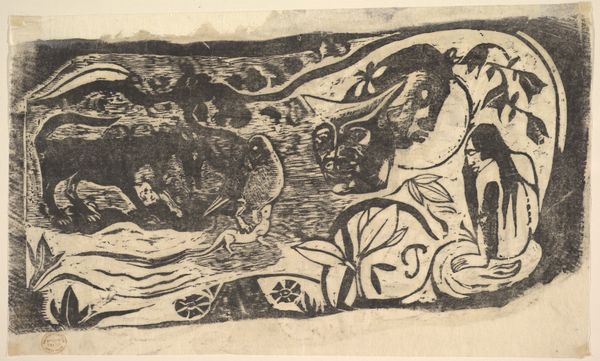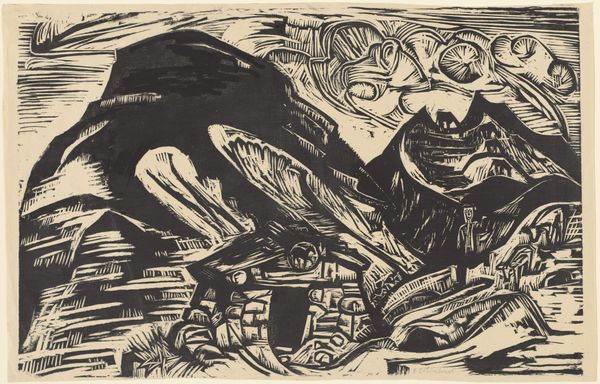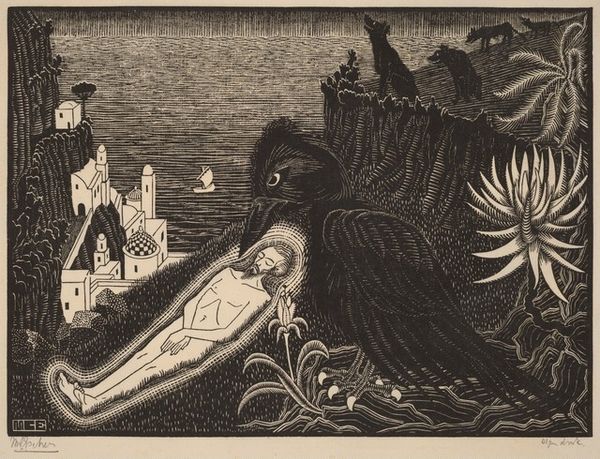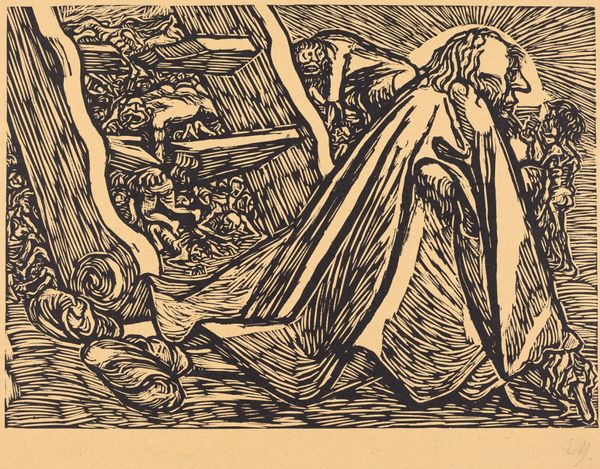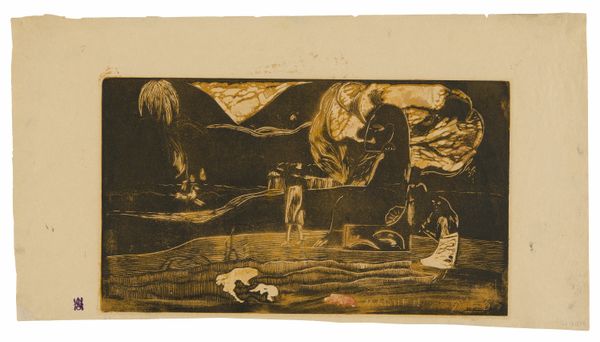
drawing, fibre-art, print, woodcut
#
drawing
#
fibre-art
#
narrative-art
# print
#
figuration
#
woodcut
#
orientalism
#
symbolism
#
erotic-art
Dimensions: block: 8 x 14 1/16 in. (20.3 x 35.7 cm) sheet: 10 3/4 x 16 5/8in. (27.3 x 42.2cm)
Copyright: Public Domain
This is Paul Gauguin’s woodcut, Te Po, which translates to “The Night” in Tahitian. Gauguin made this print after he moved to Tahiti in the 1890s. He sought to escape the confines of European society, but instead imposed his own colonial gaze upon the island’s inhabitants. The stark contrast of light and shadow evokes the anxieties of the night. The composition shows a reclining female figure, rendered in a style that merges European and Polynesian artistic traditions. She seems restless, caught between sleep and wakefulness. Three watchful figures sit behind her, guardians or perhaps symbols of subconscious fears. In the lower register, a ghost-like figure is present. The inscription "Te Po" and the Tahitian-inspired motifs suggest an engagement with local culture, but also reflect Gauguin’s romanticized vision of it. While Gauguin claimed to seek an authentic, unspoiled world, his work reveals the complexities of cultural exchange and the power dynamics inherent in representation. This piece invites us to consider the artist’s intentions, as well as the broader implications of cultural appropriation in art.
Comments
No comments
Be the first to comment and join the conversation on the ultimate creative platform.
